Related Research Articles
Edward James Stone FRS FRAS was an English astronomer.
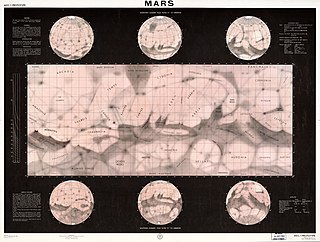
During the late 19th and early 20th centuries, it was erroneously believed that there were "canals" on the planet Mars. These were a network of long straight lines in the equatorial regions from 60° north to 60° south latitude on Mars, observed by astronomers using early telescopes without photography.

Willem de Sitter was a Dutch mathematician, physicist, and astronomer.

William Henry Pickering was an American astronomer. Pickering constructed and established several observatories or astronomical observation stations, notably including Percival Lowell's Flagstaff Observatory. He led solar eclipse expeditions and studied craters on the Moon, and hypothesized that changes in the appearance of the crater Eratosthenes were due to "lunar insects". He spent much of the later part of his life at his private observatory in Jamaica.

Andrew Claude de la Cherois Crommelin was an astronomer of French and Huguenot descent who was born in Cushendun, County Antrim, Ireland. He was educated in England at Marlborough College and Trinity College, Cambridge. After a spell teaching at Lancing College he found permanent employment at the Royal Greenwich Observatory in 1891. He joined the Royal Astronomical Society in 1888 and was its president from 1929-1931. In 1895 he joined the British Astronomical Association and was president from 1904-1906 and directed its comet section 1898-1901 and 1907-1938.

Camille Guillaume Bigourdan was a French astronomer.
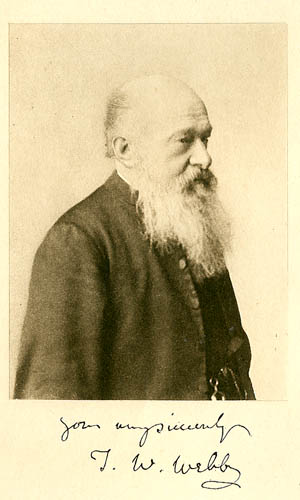
Thomas William Webb was a British astronomer. Some sources give his year of birth as 1806. The only son of a clergyman, the Rev. John Webb, he was raised and educated by his father, his mother having died while Thomas was a small child. He went to Oxford where he attended Magdalen College. In 1829 was ordained a minister in the Anglican Church. He was married to Henrietta Montague Wyatt (1820-1884) in 1843, daughter of Mr. Arthur Wyatt, Monmouth. Mrs. Webb died on 7 September 1884, and after a year of declining health Thomas died on 19 May 1885.
Philip Herbert Cowell FRS was a British astronomer.
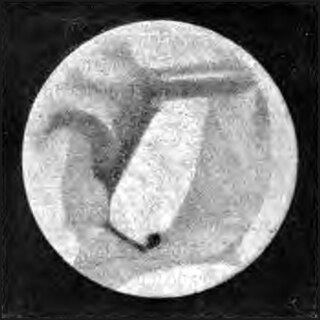
Otto Boeddicker (1853–1937) was a German astronomer. In 1880 he became the astronomical assistant of Lawrence Parsons, 4th Earl of Rosse at Birr Castle in Birr, Ireland, and remained in that position until the death of the Earl in 1908.
Joseph Gledhill was a British astronomer. He worked as an assistant at the Bermerside Observatory in Halifax, West Yorkshire, England.
The British Astronomical Association (BAA) was formed in 1890 as a national body to support the UK's amateur astronomers.
Theodore Evelyn Reece Phillips, known as T. E. R. Phillips, was an English astronomer.
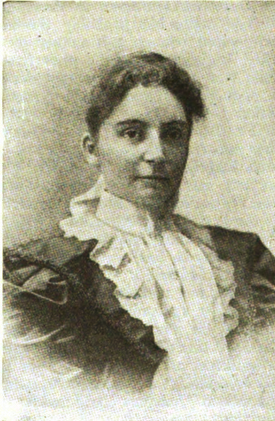
Mary Proctor was an American popularizer of astronomy. While not a professional astronomer, Proctor became well known for her books and articles written for the public – particularly her children's fiction. Despite various claims as being an American, there is a passenger list of about 1924 where she gives nationality as British.
Gabrielle Renaudot Flammarion was a French astronomer. She worked at the Camille Flammarion Observatory at Juvisy-sur-Orge, France, and was General Secretary of the Société Astronomique de France.
Reverend John Mackenzie Bacon, FRAS was an English astronomer, aeronaut, and lecturer.

The Liverpool Astronomical Society was founded in 1881 in Liverpool, England, as a society to promote and coordinate amateur astronomy.
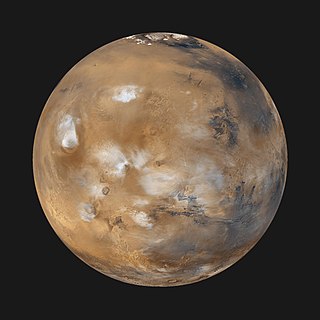
A low-aspect-ratio layered ejecta crater is a class of impact crater found on the planet Mars. This class of impact craters was discovered by Northern Arizona University scientist Professor Nadine Barlow and Dr. Joseph Boyce from the University of Hawaii in October 2013. Barlow described this class of craters as having a "thin-layered outer deposit" surpassing "the typical range of ejecta". "The combination helps vaporize the materials and create a base flow surge. The low aspect ratio refers to how thin the deposits are relative to the area they cover", Barlow said. The scientists used data from continuing reconnaissance of Mars using the old Mars Odyssey orbiter and the Mars Reconnaissance Orbiter. They discovered 139 LARLE craters ranging in diameter from 1.0 to 12.2 km, with 97% of the LARLE craters found poleward of 35N and 40S. The remaining 3% mainly traced in the equatorial Medusae Fossae Formation.

Orwell Park was an estate in the village of Nacton developed by Edward Vernon, who lived there from 1725 until he died in the mansion on 30 October 1757. It was further developed by George Tomline during the late nineteenth century. It has been the premises for Orwell Park School since 1936. In contains several Grade II listed buildings.
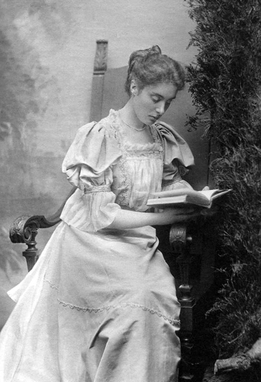
Agnes Fry was a British bryologist, astronomer, botanical illustrator, writer and poet, who donated Failand House's Estate to the National Trust.

Thomas Keig was born on the Isle of Man in 1829. He was the founder of Keigs Photography, and was the first Mayor of the island's capital, Douglas, where he took office in 1896.
References
- ↑ "1896MNRAS..56..143W Page 143". articles.adsabs.harvard.edu. Retrieved 21 July 2022.
- ↑ "1899MNRAS..59..376W Page 376". articles.adsabs.harvard.edu. Retrieved 21 July 2022.
- ↑ "Arthur S. Williams, British astronomer". Science Photo Library. Retrieved 6 November 2017.